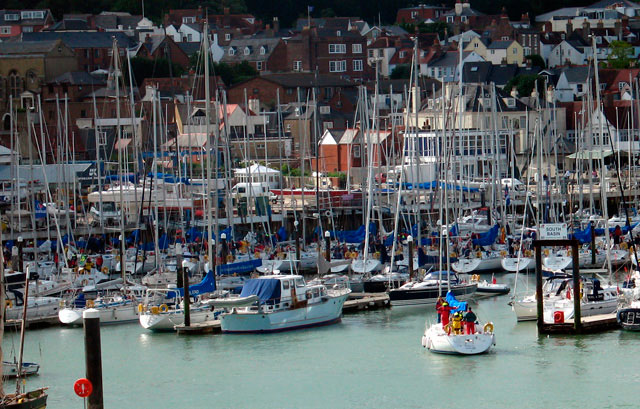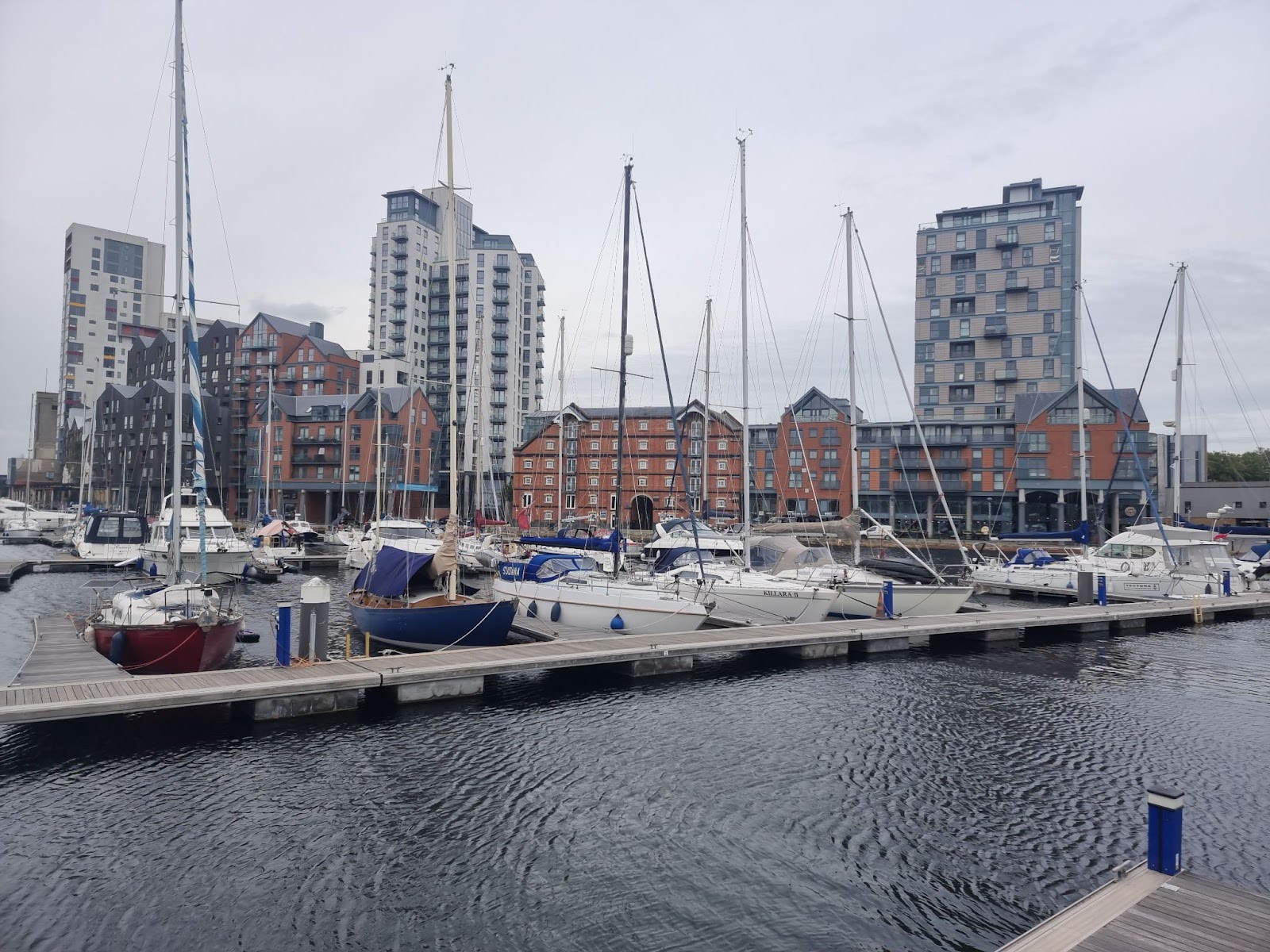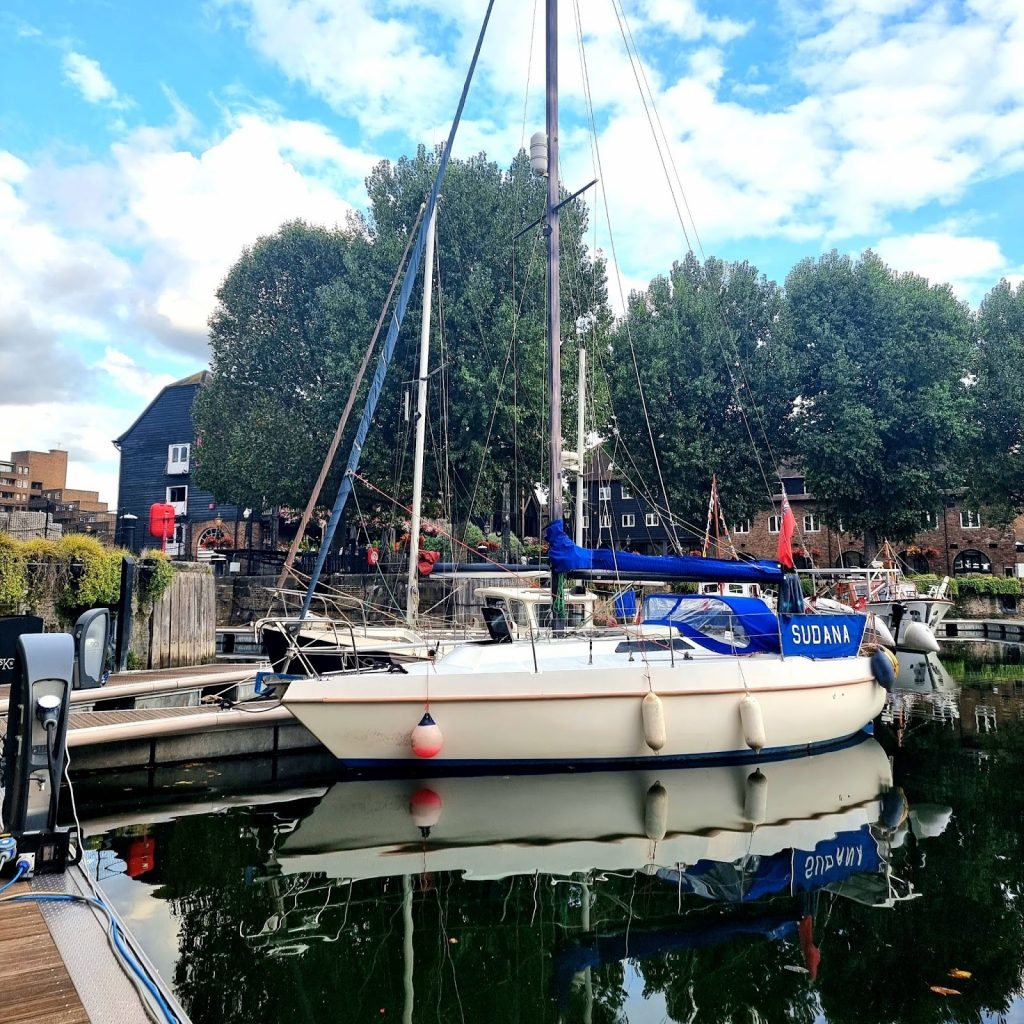It’s a challenge most boats face regularly, and one that many, especially newer owners, struggle with. You might be a brilliant sailor, but when it comes to marina berthing things can all too easily go horribly wrong. Here are our best tips to help you perfect your marina berthing.
Know where you’re going
When visiting an unknown marina for the first time, the layout of the pontoons – and the berth numbering system used – is often not clear. It’s well worth looking in advance to see whether this information is available in detailed charts of the area (whether paper or electronic) or in an almanac or pilot book. With this information to hand, if you’re directed into somewhere like, “berth A52, upstream side, starboard side to,” you can figure out exactly where you’re going, which means you’re less likely to encounter an unexpected challenging situation.

Cowes Yacht Haven: Marina berthing at the end of a passage can be the most stressful time of all, but many of the potential pitfalls are easy to avoid.
Don’t be afraid to ask for a different berth
If you’re concerned about your ability to manoeuvre the boat into the allocated berth it’s worth asking for an alternative. When space is available, most marina operators are understanding – after all, it’s not in their best interests to have a boat careering around other vessels while attempting a tricky manoeuvre. And even if they can’t offer you an alternative berth, they will likely be able to send someone out to help you dock successfully.
Give yourself a bail-out option
It’s worth identifying the point at which you are fully committed to a manoeuvre in advance. This important knowledge tells you the last point at which you can safely bail out if it doesn’t appear to be going to plan. It also allows you to look at a potentially tricky berth while keeping a safe escape route open. Marina berthing in challenging conditions can present problems even for the most experienced skippers, so it’s always a good idea to consider your bailouts and adjust your plan based on the wind, tide, and other external factors that might affect your ability to dock safely.
Similarly, it can be a good idea to speak to the marina before you approach to find out whether there’s anything specific you should be aware of. For example, are there any particularly shallow parts of the marina, tight corners to get around, or any unexpected eddies that might knock you off course? Asking these questions up-front can help you prepare for your berthing and ensure you’ve taken the proper precautions when planning your manoeuvres.
Don’t be embarrassed by lots of big fenders
When things don’t go to plan, fenders are the first line of defence between your boat and the dock, or another vessel. Admittedly, fenders won’t directly improve your boat handling, but there are times at which they can certainly reduce stress. Knowing you have fenders to protect you if you need them helps you to focus on manoeuvring the boat, rather than worrying about the worst case scenario.
It is also a good idea to take some time to prepare your lines before you enter a marina. The marina office should be able to let you know whether you’ll be mooring port- or starboard-to, so there’s no excuse to be wrestling with lines when you should be concentrating on your manoeuvres! Be sure to read our article on how to tie up a boat so you can rest assured that your vessel, lines, and fenders are ready for a stress-free berthing.

Marina berthing under sail: These professional sailors have sailed their engineless boat into a marina and are about to berth without power. They are well attuned to spotting gusts – their livelihood depends on it, but the ability to notice a gust before it hits also makes boat handling under engine much easier.
Think about the tide
In a marina in a river or estuary, the tidal stream is likely to have the most significant influence on manoeuvring. Before entering the confined space, it’s vital to know the direction it flows and its strength, both in the outer part of the marina, near the fastest stream, and the inner pontoons, where it is likely to be much weaker and back eddies may be found.
If you have to turn around in such a marina, turn in the direction that will keep the bow pointing into the stream. This means you will be tending to stem the tide mid-turn, which effectively increases the room you have available and gives you a wider turning circle. By contrast, if you try turning the bow downstream, you’ll likely run out of space (and options) embarrassingly quickly.
Entering a marina berth with a following stream is only for those already adept at boat handling. It requires a parallel approach at a speed fast enough to maintain steerage but slow enough to dock safely. As a result, it’s a manoeuvre with few, if any, bail-out options if your approach is not perfect. Often, the easier solution is to time your arrival for a time at which the stream is not unhelpful or ask for a temporary berth until it slackens or changes direction.
Be especially careful with cross tides
Most marinas are planned so that tidal streams are parallel to the pontoons or fingers you moor alongside. However, this is not always possible when a marina is located near the bend of a river – the stream may set at a significant angle to the berths here. A further complication is that cross tides can vary in angle at different tidal cycle stages. So, if you’ve experienced one set of conditions at a particular marina, don’t automatically assume they will also prevail when you next visit. For more tips on windy moorings, check out our article on How to berth safely: wind against tide.
Figure out what the wind’s doing
Second to the tide, the wind is the most crucial factor affecting boat handling and will be the dominant force in marinas in non-tidal areas, locked basins, and some dock basins converted to marina use. When moving at slow speeds, like when you’re manoeuvring in a confined space, it’s worth remembering that gusts have a disproportionately large effect.
In addition, gusts are almost always associated with a shift in wind direction, which may or may not be helpful. In gusty conditions, it helps to put the engine in gear, with a few revs on, before a gust hits, then return to neutral once it has passed. This means the propeller is pushing a good flow of water over the rudder when the gust hits, minimising the risk that you will lose steerage or be blown too far sideways. Taking the engine out of gear immediately after the gust passes will then help to control your speed so that you’re not travelling too fast to repeat the process at the next gust.
Beware of engaging reverse to control your boat speed just before a gust hits – this will cause the propeller to push a body of water the wrong way over the keel, causing the flow to stall and steerage to be lost prematurely.
Use a mid-ships spring
This may not be necessary if you have a large crew full of people who know exactly what they are doing and can re-rig mooring lines in next to no time. However, if you’re sailing short-handed, a short spring led from a mid-ship cleat will temporarily secure the boat alongside, possibly with the help of a bit of engine power to keep it in tension. Similarly, when leaving a berth, this spring will enable all other lines to be cast off first, leaving just the spring that can be easily slipped, if necessary, in a carefully chosen moment between gusts.
A mid-ship spring is also helpful when berthing on a short finger pontoon, acting as a spring to prevent the boat from moving forward and hitting the dock in front while also helping to prevent the stern from swinging away from the finger and into the neighbouring boat.
Communicate clearly with your crew
This sounds so obvious that it would be easy to omit from this list, yet at the end of a long day, when everyone is tired, hungry and stressed, effective communication can be difficult to achieve.
If you’re on a larger vessel, where it’s difficult to hear someone from the opposite end of the ship, you may wish to consider investing in a set of Bluetooth headphones or walkie-talkies to help make communication easier. It’s also worth remembering that a crew is a team and that you all have the same goal (to dock safely), so speaking to one another with respect and consideration is vital.
The secret to successful marina berthing is to plan ahead
This is probably the most important tip, although a successful plan will likely incorporate all of the previous points. There’s also no harm in looking at a difficult berth, maybe even a trial run, allowing you to get a better feel for the dynamics of the wind, tide, and other factors that need to be harnessed – or overcome. This approach will also highlight any misconceptions you may have formed about the manoeuvres necessary, allowing you to reformulate the plan without making any embarrassing mistakes.
That said, mistakes happen, and even the most experienced skippers will occasionally mess up a berthing. When things go wrong, it’s important to stay calm and figure out how to fix whatever’s gone wrong, rather than getting stressed and making more mistakes.
How NOT to approach marina berthing!
Talking of embarrassing mistakes… if you want to see an example of getting it very wrong, take a look at the video container ship destroys a marina – it’s sure to make you feel a bit better about your own berthing mishaps!
Editor’s note: This article was originally published by Rupert Holmes in July 2013, an updated by Pippa Shaw in June 2024.


